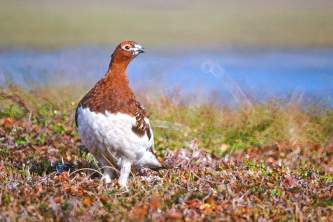Safety Issues on Alaskan Rivers
Whether you’re encountering frozen-solid water, flash floods or bears chasing salmon, Alaskan rivers offer both amazing qualities as well as their own risks. In a remote, wilderness setting, you can’t be too careful, so here’s what you should watch, and prepare for, as you take a kayak, raft or canoe trip down an Alaskan river.
Hypothermia
This silent killer could be the most common danger you face when running rivers in Alaska. Getting submerged in glacial water, or just getting soaked to the skin by freezing rain or cold river water, can cause this potentially deadly lowering of your body temperature. To prevent hypothermia, you need the right gear—and you have to use it before you need it, not after you get soaked.
Here’s What You May Need
- A proper paddling jacket: If you’re sure you’re staying on board, you’ll need a proper paddling jacket, or at least heavy-duty rain gear on top and bottoms.
- A drysuit: if you’re on a glacial river with whitewater, and there’s any chance of being tossed overboard. You’ll also need to wear insulated clothing underneath. Drysuits are far superior to wetsuits for the freezing waters of the Arctic.
- Lightweight rain gear: Even if you’re out hiking, you need to have lightweight rain gear with you, in case nasty weather finds you.
- A hypothermia kit. In a drybag, keep a fleece suit (jacket, pants, hat and socks), lightweight rain suit, emergency sleeping bag, survival blanket, a simple fire starter kit. I also take a thermos with hot, sweet liquids. If it’s too hot, I dilute it at the river.
Aufeis
Found in the far northern rivers of Alaska’s arctic regions, this is one of the most unusual dangers your may face on an Alaskan River. Aufeis is a sheet of ice that forms during winter, filling a river valley until the summer months.
It’s unpredictable, too: Sometimes, river water flowing underneath a river’s frozen surface will be forced up to the top through cracks and will form more layers of ice—much the same way a hail stone is formed when a droplet of water is carried up and down into the cold atmosphere. By spring, there could be as much as 10 to 12 feet of ice that spreads out along the sides of the river, into the shrubs and across the tundra. Here are the hazards it can create for river runners:
Dangerous Passage
Even when the spring breakup sends the main layers of ice downriver, aufeis can linger and block your way. So, never proceed into a narrow channel without knowing that the path is clear. If you can’t tell, get out and walk down the ice to scout the way. I keep a climber’s ice screw in my kit, and have used it many times to tie the raft to something while scouting. We’ve had to portage our boats and gear over to other channels when they the way has proven to be completely blocked.
Aufeis Can Extend for Miles Across the Tundra
I once did a trip down the Hula Hula RiverHula Hula River where, at one point, our rafts were forced out of the main channel by a persistent spot of aufeis that always seems to be difficult to get by. In this case our rafts were forced out of the channel, and before we knew it we were in a different streambed, then taken into a different watershed. In 30 years of rafting I have never before started on one river and wound up on a different one without having to portage. In this case, we reached the coast nine miles west of where we were supposed to be—not a danger, thankfully, but a big hassle.
Beware When a River Goes Under the Ice, Not Around it
This is one of the greatest dangers you can confront on an Arctic river. Most of the time, the river will have cleared a path through the ice, often with walls of ice 10 feet high to either side of you. I know of one trip where a boat entered a channel that hit a dead-end— but the boat was able to stop before catastrophe hit. As the group tried to figure out what they would do, they heard a loud boom—and the ice blocking the channel collapsed, damming the channel up instantly. The water began to back up so much that the group actually floated back up the way they had come, until they were able to proceed down another channel.
Learn More About Aufeis Learn More About Aufeis
High Water and Flash Floods
Due to aufeis and other characteristic of the terrain up here, flood conditions can crop up fast. Here’s why:
Aufeis Causes a Chain Reaction
Due to aufeis, large areas of ice collapse and dam up a river’s flow. When the dam finally releases, a catastrophic flood can occur downstream of the aufeis, causing flash floods in camps.
Any Amount of Rain
In these areas, with lots of permafrost, there’s nowhere for rainwater to go—it certainly doesn't soak into the ground. If you’re camping at the mouth of streams, you have to keep an eye on the water level, and keep your boat tied off well at all times.
Evening Water Rises
This happens on hot days, when the sun melts part of an icefield or aufeis during the day, but the runoff doesn't arrive downriver till early evening, peaking late at night. It doesn’t necessarily cause a flash flood, but you can be sure that anything left close to the water will get wet, and that boats will start yanking and pulling on their tie-ups. You can also just plan around it. I was once on a trip on the Kongakut RiverKongakut River where the river was so low during the day that we switched to a night time schedule of floating. We’d sleep in, have breakfast at noon, hike, have lunch at 5, then float each evening until midnight.




